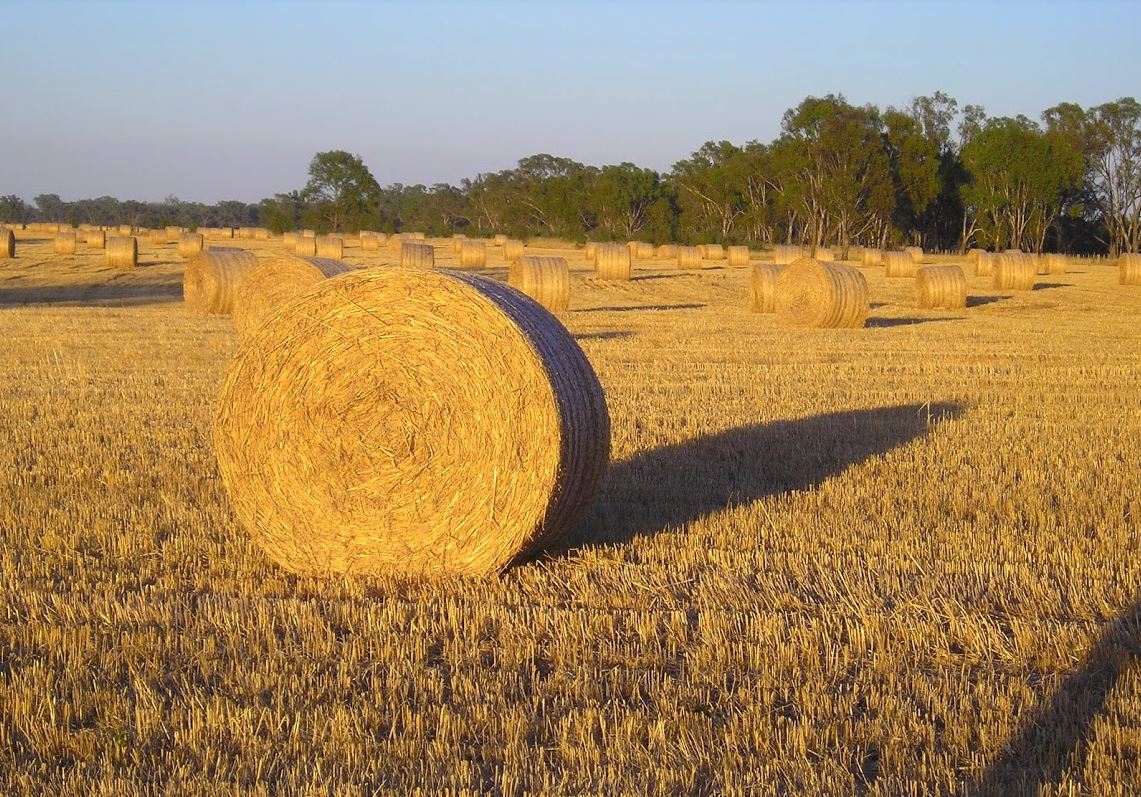Be aware of the risks of importing weeds
 PRODUCTION ADVICE - OCTOBER 2020 - PESTS & WEEDS
PRODUCTION ADVICE - OCTOBER 2020 - PESTS & WEEDS
By Adrian Smith
Senior Land Services Officer - Mixed Farming Systems
P: 03 5881 9932 | M: 0447 778 515 | E: adrian.smith@lls.nsw.gov.au
Weeds in stockfeed and fodder

But no matter the circumstance, if you are sourcing grain or fodder off your own farm, do you know what biosecurity risk(s) importing this feed may have to your farm business?
If the answer is no, then read on.
Whenever we need to import feed from elsewhere, there are always going to be risks – we need to understand those risks and do everything we can to manage them.
What are your legal responsibilities?
Did you know that within NSW, the Biosecurity Act 2015 places certain obligations on both vendors and purchasers who sell, purchase and transport fodder within NSW and interstate?
Biosecurity in the fodder industry is largely managed through the General Biosecurity Duty (GBD), where everyone has a duty to minimise the impact and risk of weeds and pests in NSW.
There are a number of feed substances that are either banned or strictly controlled from entering NSW, including:
- All lupin material grown in WA and SA is banned from entering NSW (except under strict permit conditions), to protect our state from lupin anthracnose
- All fodder grown in areas where green snail infestations have been identified (green snail is known to occur in areas of WA and Victoria).
- Hay or chaff material contaminated with the tomato potato psyllid
- Hay or straw sourced from an area where red imported fire ants are known to occur (only from certain areas of Queensland).
- Hay or straw from areas known to have infestations of parthenium weed or branched broomrape are prohibited.
More information about the specifics of importing prohibited or controlled materials can be found at the following link – which is provided by NSW DPI - https://www.dpi.nsw.gov.au/biosecurity/feed-and-fodder/entry-requirements
What can you do to further protect yourself?
Producers who are looking to source feed from areas they are not familiar with should, at the very least, request a Commodity Vendor Declaration from their supplier. This document outlines the conditions under which a fodder crop, or a failed crop harvested for fodder, was grown and what chemicals were used to treat the crop prior to harvest.
This not only protects you, but many of the markets into which your produce will ultimately be sold.
The key points to remember are:
BEFORE YOU ORDER OR ACCEPT FEED AND FODDER:
- Know the source. Ask where the fodder has come from and what it is made up of.
- Check it is allowed into NSW and the risks you may be exposed to.
- You should reject any fodder or feed that doesn’t meet NSW requirements.
WHEN YOU RECEIVE AND ACCEPT FEED AND FODDER:
- Keep a record of where you received fodder from and what it is made up of to help you trace any problems later.
- Check it carefully by looking it over.
- If you see insects, snails, the consignment smells, the colour is not right, or there are other strange signs contact your Local Land Services office for advice.
WHEN FEEDING:
- Reduce risks by restricting feed-out areas to one or two “sacrificial paddocks” in places you can check in the weeks and months after each rain event for up to two years after a drought.
- Keep detailed livestock feeding records by paddock and mob so if a problem presents, you can track, trace and contain it.
AFTER FEEDING AND WHEN IT RAINS:
- Keep an eye open for weeds and any new or unusual plants in feed-out areas and around waterways.
- Control weeds as soon as you find them, before they are able to set seed.
- Keep a close watch for any new or unknown plants, pests and diseases. Don’t hesitate to call for assistance.
Weeds in and on vehicles and machinery
With the prospects of a large grain harvest in front of us in NSW, we have already seen contractors and their machinery heading into northern NSW and southern Queensland.
With this increased movement comes the increased risk of spreading unwanted weeds into new areas. Vehicles or machinery operating or moving through weed infestations can become contaminated with invasive plant seeds or reproductive material. These can then travel long distances on the vehicle or machinery to new locations.
Reproductive material can include any part of a plant that is capable of growing to become a new plant (e.g. a bulb, rhizome, stolon, tuber, stem, leaf cutting or stem or root fragment).
There is a real risk that these seeds or soil and mud containing the seeds will fall from contaminated or dirty machinery or vehicles in agricultural production or environmentally sensitive locations where an invasive plant infestation may become a long-term and costly problem.
Under the NSW Biosecurity Act 2015, people and carriers have a duty to ensure that, so far as is reasonably practicable, the biosecurity risk is prevented, eliminated or minimised.
What can you do to minimise the risks?
There is a range of simple measures producers and contractors can use to minimise any biosecurity threat, including:
- Avoid driving off-road in areas known to contain declared plants (such as parthenium weed) or in other areas that present a risk of vehicle or machinery contamination.
- Do not drive through infested paddocks.
- Ensure clothing and footwear is free of soil and plant material before stepping into vehicles.
- Avoid driving or working in contaminated areas in wet or dewy conditions.
- Clean vehicles and machinery suspected of carrying soil or plant material.
- Begin work in clean areas or in areas with the least amount of infestation and work towards infested or high-density areas.
- Keep roads, laneways and buffer zones free of invasive plants.
- Where possible, work infested areas separately and clean down equipment thoroughly before moving to another area.
- Avoid slashing and other work in infested areas during peak seed production times.
- Secure loads (e.g. grain, fodder) if you suspect they contain weed seeds.
Apart from adopting these simple guidelines, it is important that vehicles and machinery are thoroughly cleaned – come clean, leave clean!
Operators and landholders should consider the use of temporary clean-down areas on their properties, even when moving from paddock-to-paddock if there is a high risk of weed contamination. There are also public facilities in many local government areas where more thorough cleaning can be carried out, where silt and grease traps can trap contaminates and reduce environmental risk.
Wherever you clean your machinery, some useful tips to keep in mind include:
- Examine the item to determine how much mud, soil and plant material has built up.
- Identify any areas that require special attention as outlined in the specific vehicle or machinery procedures (e.g. radiators, spare tyres, behind guards and protective plates). Some of these may be difficult to locate and access. Remove the necessary guards or belly plates to access these areas for cleaning.
- Identify any areas that must be cleaned with compressed air rather than water. Clean these first.
- Where possible clean from the top down.
- Clean upper body and cabin then under the guards and underneath the machinery/vehicle and then do the attachments or implements.
- Clean all toolboxes and storage compartments.
- Check that all areas have been cleaned.
- Replace the guards. (Remember that belly plates and other guards on heavy machinery may need to be replaced before moving the machinery.)
- Move the clean vehicle or machinery carefully, avoiding recontamination. If necessary, wash any remaining mud, soil or plant material from the tyres or tracks.
- Record the details of the cleaning on the appropriate forms or in the vehicle or machinery logbook.
- Present the vehicle or machinery to an inspector if required.
- Dispose of any plant material according to the relevant guidelines.
While all of this might seem very straightforward, how often can you say that you have done everything you could have to minimise the threat of weed contamination and spread?
Following these guidelines will not only minimise the real threat of a biosecurity incident or incursion, but will also ensure you fulfil your legal obligations and responsibilities.
Reducing these threats is everyone’s responsibility.